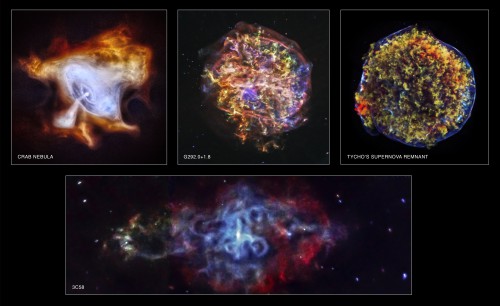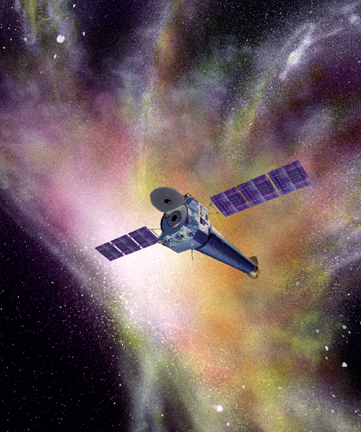
The Chandra X-Ray Observatory, NASA’s space telescope which observes the universe using X-rays, has now completed its 15th year of operations, and astronomers are celebrating the anniversary with a series of special images from the orbiting observatory. First launched aboard the Space Shuttle Columbia on July 23, 1999, Chandra has allowed astronomers a unique look at activity in hot and energetic regions of the universe. Referred to as one of the “Great Observatories,” along with the Hubble Space Telescope and Spitzer Space Telescope, it has helped astronomers better understand such cosmic phenomena as stars, galaxies, quasars, supernovae, black holes, and even planets and comets in our own Solar System. It has even added to our knowledge of even more mysterious phenomena like dark matter and dark energy.
Chandra has discovered black holes across the universe and peered at the region around the supermassive black hole at the centre of our galaxy. Huge black holes are thought to exist in the hearts of other galaxies as well. The space telescope is also able to investigate dark matter by examining the separation of dark matter from normal matter in collisions between galaxy clusters. Just like regular telescopes can see in normal light, Chandra can observe the universe in X-ray light, in exquisite detail not able to be obtained before until now.

“Chandra changed the way we do astronomy. It showed that precision observation of the X-rays from cosmic sources is critical to understanding what is going on,” said Paul Hertz, NASA’s Astrophysics Division director in Washington. He added, “We’re fortunate we’ve had 15 years – so far – to use Chandra to advance our understanding of stars, galaxies, black holes, dark energy, and the origin of the elements necessary for life.”
The X-ray images Chandra takes are beautiful, and to celebrate the anniversary NASA has released four new special and detailed images of supernova remnants: the Crab Nebula, Tycho, G292.0+1.8, and 3C58. Hot and energetic structures, such as supernova remnants, glow brightly in X-ray vision. In order to achieve this, Chandra orbits high above the Earth’s atmosphere, up to 86,500 miles (139,000 km), which absorbs X-rays.
So with Chandra still in good health, what about the future? Belinda Wilkes, director of the Chandra X-ray Center (CXC) in Cambridge, Mass., summed it up quite optimistically:
“We are thrilled at how well Chandra continues to perform. The science and operations teams work very hard to ensure that Chandra delivers its astounding results, just as it has for the past decade and a half. We are looking forward to more ground-breaking science over the next decade and beyond.”
Martin Weisskopf, Chandra Project Scientist at the Marshall Space Flight Center in Huntsville, Ala., added: “Chandra continues to be one of the most successful missions that NASA has ever flown as measured against any metric – cost, schedule, technical success and, most of all, scientific discoveries. It has been a privilege to work on developing and maintaining this scientific powerhouse, and we look forward to many years to come.”
More information about the 15th anniversary is available here, and more information about the Chandra mission itself is available here.
Want to keep up-to-date with all things space? Be sure to “Like” AmericaSpace on Facebook and follow us on Twitter:@AmericaSpace



